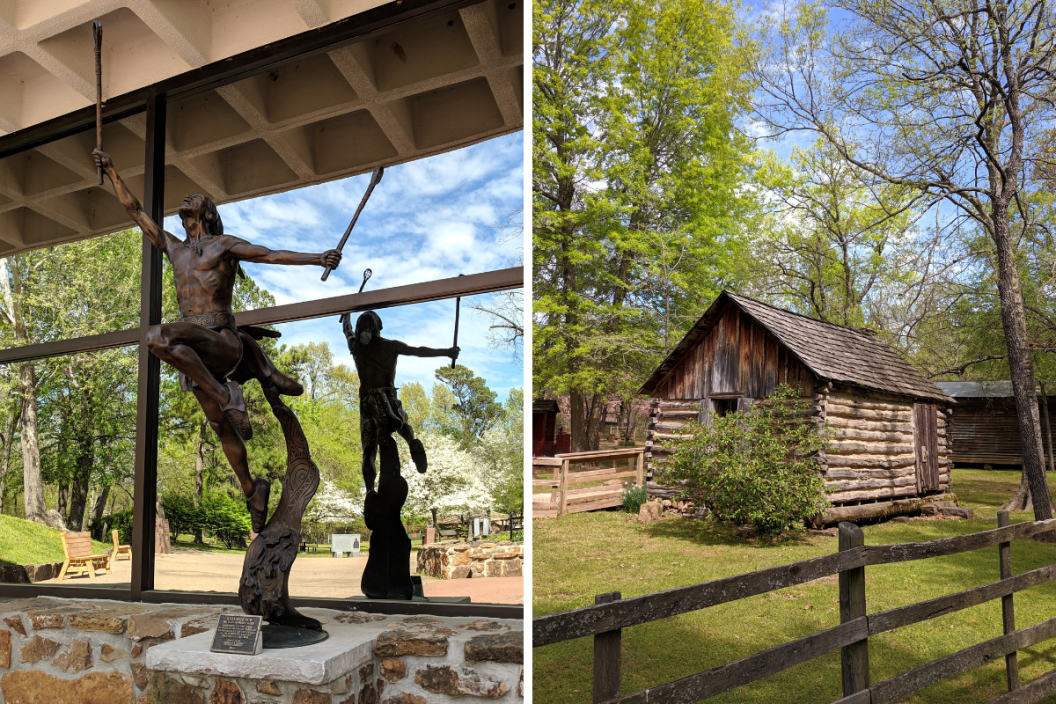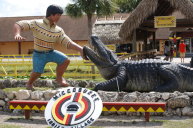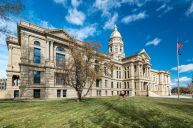What do you think of when you think of Oklahoma? The Oklahoma Sooners? Barbecue? Vast open fields of farmland? Cowboys trekking across the state singing country music? A place for removed Indigenous and Native Americans to go and the horrific trail of tears? You can say all of these things apply to the Sooner state, which is bordered by Texas, New Mexico, Arkansas, Missouri, Kansas, and Colorado.
About the Cherokee Heritage Center
Located in the heart of the Cherokee Nation, the Cherokee Heritage Center serves as a hub for tribal history, the arts, and the important culture of the Cherokee people. Situated in Park Hill, Oklahoma, just outside of Tahlequah, the Board of Trustees of the Cherokee National Historical Society confirmed the Center of Trustees in 1963 to preserve and promote Cherokee culture.
The building stands on the historic Cherokee National Female Seminary grounds, which was one of the first higher learning institutions for females west of the Mississippi. Included on the National Register of Historic Places, the National Park Service deems the landmark the interpretive site for the western terminus of the unfortunate Trail of Tears when Cherokees and other Natives were forcibly moved to Oklahoma in the 1800s.
Cherokee National Archives & Research Center
This non-profit organization is home to the Cherokee National Archives, which serves as the country's leading collection of documents and artifacts from the Native American Cherokee tribe. This Cherokee National Museum is also home to the Cherokee Family Research Center, which helps Oklahoma Cherokee descendants reconnect with their lineage.
Cherokee History
A huge part of the preservation of Cherokee history is thanks to Sequoyah, a Native American polymath and part of the Cherokee Nation. He was able to complete his creation of the Cherokee syllabary in 1821, which made it possible to pass the ability to read and write the intricate language. Learn about the Cherokee Indians when you visit this amazing history museum.
What To Do at the Heritage Center
Trail of Tears Exhibit
This permanent exhibit dives into the forced removal of Cherokee ancestors from their Indigenous lands to the modern-day "Indian Territory." Six galleries show the troubled tale through documents and artifacts.
Trail of Tears Art Show
Every year, the Heritage Center holds the Trail of Tears Art Show and Sale.
Diligwa
Opened on the historic grounds of the Heritage Center in 2013, Diligwa is a 1710 Cherokee Village composed of a living outdoor exhibit that gives guests an interactive experience of natural Cherokee life.
Adams Corner Rural Village
Another way to discover what life was like for the Cherokee Indians in the 1890s before Oklahoma became a state, visit Adams Corner Rural Village. This village is composed of seven buildings with a self-guided tour included in the admission price when you visit the Cherokee Heritage Center.
Gift Shop
Visit the museum store to shop from a selection of Native American gifts and art. The store presents original paintings, Cherokee apparel, history books, authentic sculpture, and more. Shop online here.
How to Support the Cherokee People
To support this indigenous tribe that was forcibly removed from their sacred land, become a member of the Heritage Center, donate to the Cherokee people, or volunteer at the museum.
Visit the Cherokee Heritage Center
The heritage center is just over one hour from Tulsa and two and a half hours from Oklahoma City. The museum is located at 21192 S. Keeler Drive in Park Hill, Oklahoma, 74451. Visit cherokeeheritage.org for current hours and days of operation.
Follow along at our Wide Open Roads Facebook page!




